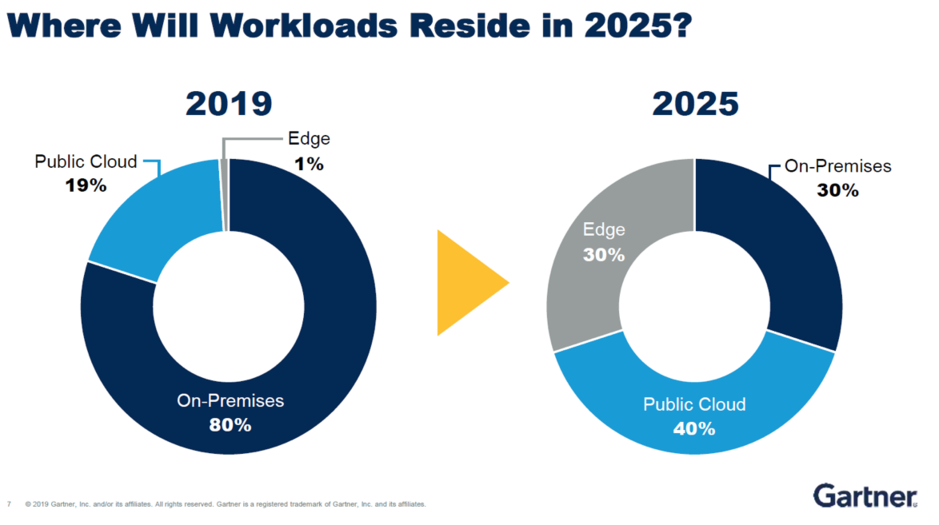If, like in a majority of organizations, your IT infrastructure has evolved towards a digitalized architecture (i.e., cloud, containers, microservices, containers), the time may be ripe to modernize your ITIM practices too. According to industry analysts, IT monitoring practices are not evolving as fast as the businesses they are supporting.
Today’s digital business model involves constantly improving performance and customer experiences. In IT terms, it translates into an ever-changing, expanding, complexified IT environment. If IT monitoring practices are not being modernized at the same speed, you’re probably stuck with an increasingly fragmented or incomplete vision of your IT estate — which is, well, counterproductive to your job’s mission statement. Visibility is not your only problem, if what you look at and report on is no longer relevant in the context of the digital business.
In “Monitoring Beyond 2020: Focus on Performance”, Gartner states that “cloud-dependent digitalization focused only on availability is a recipe for disaster.”
How can you tell if you’re running an obsolete ITIM operation?
This blog post reviews some of the most common legacy practices of IT infrastructure monitoring. You’ll be able to draft a quick diagnostic on the state of IT infrastructure monitoring practices in your own environment and their potential impact for your organization as a whole. The exercise constitutes a first step to trigger the modernization conversation within your team and organization.
The 7 signs of legacy IT monitoring
- Focused on individual IT equipment.
- Dashboards principally showing availability of compute, storage and network resources.
- Metrics are not aggregated into higher levels KPIs.
- Measures IT performance principally in terms of uptime.
- Most monitoring projects deployed at the production phase.
- Reports mainly provide insights on how the IT system is running.
- No end-to-end visibility on core business transactions.
Symptoms mask uncaptured opportunities
Are some of the symptoms listed above present in your own experience of IT monitoring? They provide good clues that your organization is dealing with legacy IT monitoring, but they also lift the veil on new and exciting opportunities. With some planning (felt markers may be involved!) and expert support, you could be deploying the ITOM practices that will forever change your organization, giving it unprecedented visibility into the possibilities of the IT system and a full fledge contribution to the constant evolution of the digital business.
Is status quo an option?
The drawbacks of legacy IT monitoring practices make the status quo a poor option. Why? Because the digital business itself is not static. It’s a swim or sink environment out there. Even the most inconspicuous legacy practice can have surprising impacts on your team and organization on the whole. Here are some drawbacks to expect:
- Uptime tunnel vision. A primary focus on uptime comes with extensive blind spots when it comes to account for IT service quality or business performance, which are pivotal to support the digital business.
- Resource view paralysis. Tracking compute, storage and network resources take up a lot of energy and data space for little return on the effort, past the basic maintenance stage. These reactive metrics provide little leverage to integrate or fine-tune IT operations continuously.
- Relevance atrophy. With legacy IT monitoring typically focusing on on-premise assets, these assets’ share of the IT system will be shrinking from 80% in 2019 to 30% in 2025 (Gartner, November 2019). The risk is that legacy monitoring would come to equal no monitoring at all. Considering future IT environments will be much more fragmented than initially expected, there’s clear value in modernizing IT monitoring practices.

- Stunted innovation and growth. Failing to invest in modern IT monitoring practices will inevitably limit the ability of I&O organizations to contribute to the digital experiences that create engaged users and customers. This will in turn limit the ability of the organization to successfully implement innovation initiatives.
“The real risk of maintaining ITIM legacy practices is not IT failure or a higher incident rate. It is about dissatisfied users and customers, directly impacting financial results for the business—and our paychecks.”
Are we in fact witnessing the slow death of IT monitoring?
Not at all. We’re witnessing the advent of a promising rebirth. What’s dying are legacy IT monitoring practices. The era of simply confirming that the IT system is working as expected is going the way of monolithic IT architectures. As the businesses we are supporting have become digital entities, our scope of work for IT monitoring is taking a new twist — we’ve become business enablers.
Where are you standing — closer to legacy IT monitoring or making good progress towards smart monitoring? Contact us to see how we can help transform your entire I&O organization into business enablers.





